Vintage Salt Water Pearl + 14ktGF Earrings Ancient Greece Ocean Lightening Tears
Eight Genuine Natural Solid Creamy White Salt-Water Pearls. Mounted into contemporary high quality 14kt gold fill French hooks.
CLASSIFICATION: Approximately Four Carats of Natural Solid White Salt-Water Pearls.
ORIGIN: Persian Gulf. Early 20th Century.
APPROXIMATE SIZE: Diameter: 5mm. Thickness: 2 1/2 - 3 1/2mm (approximate measurement).
APPROXIMATE WEIGHT: 1/2+ carats (each).
NOTES: Mounted onto high quality contemporary 14kt gold fill (not cheap electroplate) french hooks. Upon request we can substitute kidney wires, ball-stud dangles, euro-clicks, or leverbacks. We can also substitute sterling silver. 14kt solid gold settings are available at extra cost.
DETAIL: Many ancient Mediterranean cultures believed pearls were formed when an angel's tears fell into the open oyster shell, or alternatively were the tears of gods. However the ancient Greeks had different ideas on the origins of pearls. According to one ancient Greek legend, pearls were formed by lightning striking the ocean. Another ancient Greek legend posited that pearls were dew from the moon collected by oysters that opened their shells as they floated on the sea at night. During the Middle Ages it was believed that pearls possessed the power to protect the wearer in battle, and so it was not uncommon to find suits of armor for the nobility encrusted with pearls. In Renaissance Europe the appetite for pearls became so great that laws forbade anyone other than royalty or the very privileged classes from even wearing pearls. Pearls were the exclusive domain of the crown and select nobility!
Here are a pair of very cute earrings we produced using beautiful, iridescent, sumptuous, natural, solid white salt-water pearls. They are not cultured pearls, not imitation pearls, they are genuine saltwater white pearls. Eight sumptuous genuine natural white salt water pearls set onto high quality 14kt gold fill french hooks. This is first-quality jewelry designed to last years and years, not cheap costume jewelry. Please do not confuse these pearls with cheap, plastic-center, thinly coated cultured freshwater pearl imitations. The vast majority of the pearls one sees on the market these days are just that - cultured pearls (oftentimes freshwater) with a few thin layers of pearl atop an artificial core. These gorgeous white pearls are solid, natural saltwater pearls, possessing a highly polished, reflective, lustrous, creamy white surface with iridescent mother-of-pearl highlights.
The pearls are natural, so are not perfectly round. Perfectly round pearls are not common in nature - they are generally induced by man, i.e., cultured pearls which consist of a few layers of pearl over a manmade center. Though the pearls are more or less round, they are not perfectly spherical. They are known in the industry as "button" pearls, which means that their diameter is greater than their thickness - like an onion or mandarin orange. They average about five millimeters in diameter, and between two and one-half and three and one-half millimeters in thickness. Each pearl weighs (on average) well in excess of one-half carat - the total gemstone weight of the two earrings being about four carats. These caveats in mind, these are very nice, hard to find gemstones.
The earring settings are of contemporary origin. They are high quality settings manufactured by one of the USA’s leading semi-custom mount producers. They are constructed of 14kt gold fill . They are not cheap, gold electroplated earrings. They are of genuine 14kt gold fill , designed to last a lifetime. It's a first-class piece of jewelry throughout. If you prefer settings other than gold filled french hooks; we can remount them onto solid 14kt gold or sterling silver; or onto kidney wires, ball-stud dangles, leverbacks, or euro-clicks - or even clip-ons. Originally produced in the 1920's, genuine solid salt water pearls like these can be very costly these days, difficult to obtain in a world of cultured and artificial pearls.
PEARL HISTORY: The pearl is likely the first gemstone known to prehistoric man. A fragment of the oldest known pearl jewelry, found in the sarcophagus of a Persian princess who died in 520 B.C., is displayed in the Louvre in Paris. Pearl necklaces have also been found by archaeologists within the sarcophagus of ancient Egyptian mummies. In the ancient world, natural salt-water pearls were principally harvested from the Persian Gulf, the Gulf of Manaar (Indian Ocean), and the Red Sea. Man has adorned him(her)self with pearls for at least 6,000 years. In the ancient gemstone markets of Babylon, 5,000 years ago, pearls were prized possessions believed to restore youth. Written accounts of pearl jewelry exist both in third millennium B.C. Indian and Chinese texts. The ultimate origin of pearls in the ancient world was the source of many competing myths and legends. Ancient Chinese written accounts tell that pearls fell from the skies when dragons above fight (the pearls droplets of dragon saliva). Alternate ancient Chinese legends stated that pearls were found in the brains of dragons. As early as the Han Dynasty (200 B.C.) the ancient Chinese hunted extensively for seawater pearls in the South China Sea.
The ancient Hindus believed that pearls were dewdrops that fell at night into the sea and collected in oysters. The pearl (“mukta” in Sanskrit) was associated with many Hindu deities, the most famous being the Koustubha which Lord Vishnu wore on his chest. According to the accounts of Marco Polo, the kings of Malabar (near present-day Calicut, Kerala, India) wore a necklace of 108 rubies and 108 precious pearls which was given from one generation of kings to the next. The spherical shape of some pearls also led many ancient cultures to associate this gem with the moon. To the Ancient Persians, pearls symbolized the moon and its magical powers, the moon instilling pearls with its celestial glow and mystery. In some Muslim legends, the pearl is God's first act of creation. Many ancient Mediterranean cultures believed pearls were formed when an angel's tears fell into the open oyster shell, or alternatively were the tears of gods. However according to one ancient Greek legend, pearls were formed by lightning striking the ocean. Another ancient Greek legend posited that pearls were dew from the moon collected by oysters that opened their shells as they floated on the sea at night.
Even the Bible referred to the high value of pearls when Christ said, "the kingdom of Heaven is like a merchant searching for beautiful pearls, who, finding one of great cost, sells all his possessions to buy it.” Also according to biblical accounts, the twelve gates of the (post-apocalyptic) New Jerusalem are each made of a single pearl (the “pearly gates” of heaven). "And the twelve gates were twelve pearls; every gate was of one pearl, and the streets of the city were pure gold, as if transparent glass." Likewise in Islamic Scripture, the Koran specifies that the rewards of paradise include pearls. “God will admit those who believe and work righteous deeds, to gardens beneath which rivers flow. They shall be adorned therein with bracelets of gold and pearls; and their garments there will be of silk.” The Greeks thought that pearls held the essence of love and beauty. A pair of pearl earrings owned by Cleopatra were estimated by the ancient Roman Historian Pliny to have a value of about 60 million sesterces (equivalent to 10,000 pounds of gold, $40 million in today’s value). Who can forget the tale of Cleopatra dissolving one of these two pearls in the presence of Marc Antony, so she could “taste” the essence of pearl.
Throughout ancient Rome and into medieval Europe, pearls always decorated crowns and robes of kings and queens. In fact, all of Rome and the entire Roman Mediterranean were “pearl crazy”. According to the first century historian and naturalist “Pliny the Elder” (who wrote that pearls were created from the morning dew), the craze started when a portrait of Pompey the Great was rendered in pearls to mark the occasion of his third triumph (celebratory parade) over the defeat of Mithridates, King of Pontus (present day Turkey on the Black Sea). As well, amongst the spoils of the war displayed during the parade were numerous pearls set in crowns and other jewelry. In the following fashion frenzy, the women of Rome preferred to wear two or three pearls dangling from their ears, so they would rattle as they moved, attracting attention to the fact that they were wearing pearls. Roman matrons had pearls woven into their garments, and even used pearls to decorate their couches. The third wife of the Roman Emperor Caligula reportedly owned pearl jewelry with a value of 40 million sesterces ($25 million in today’s dollars). In fact it was rumored within Rome itself that the real purpose of Julius Caesar’s invasion of Britain was to gain control of the fresh water pearls that were found there, and that "in comparing their size he sometimes weighed them with his own hand". In 46 B.C., when Caesar returned from Egypt to Rome where he was joined by Cleopatra and their infant son, he dedicated a cuirass made completely of British pearls in the Temple of Venus Genetrix.
In the ancient world, shamans used pearls to help enhance their psychic and divination powers, and to connect with lunar gods and gods of the oceans and seas. During the Middle Ages it was believed that pearls possessed the power to protect the wearer in battle, and so it was not uncommon to find suits of armor for the nobility encrusted with pearls. In Renaissance Europe the appetite for pearls became so great that laws forbade anyone other than royalty or the very privileged classes from even wearing pearls. Pearls were the exclusive domain of the crown and select nobility! The appetite for pearls was enormous, and the natural salt water pearl beds of Central and South America were ravaged. The principal salt-water oyster beds remaining which still produce solid pearls today lay in Australia, the Persian Gulf, along the coasts of India, Sri Lanka, and in the Red Sea. The principle sources for cultured saltwater pearls today are Australia, Indonesia, Tahiti, the Philippines, and Burma. China, the USA, and Bavaria are the principle sources for freshwater pearls.
Unknown today to most, America exported to Victorian Europe large numbers of very high quality freshwater pearls from the Ohio, Mississippi, and Tennessee River basins. So many gems were exported to Europe that the New World quickly gained the appellation "Land of Pearls." Except for the freshwater production of small specimens, genuine solid pearls are by and large only obtainable as antiques. From the 1930’s to present day, cultured pearls from Japan have predominated the marketplace. Most people generally credit the “invention” of cultured pearls with Kokichi Mikimoto in Japan at the turn of the twentieth century. However eight hundred years ago in China, monks planted carvings of Buddhist deities into river mollusks in order to be coated with pearl-like layers, the first recorded cultured “pearls”. Since the 1990’s, with the decline of Japanese cultured pearl production due to pollution and disease, China has increasingly been the dominant supplier of cultured pearls, both freshwater and saltwater. However it is still generally believed that the finest cultured pearls ever produced, with the exception of limited quantities produced in Tahiti, were produced in Japan between 1930 and 1970.
Pearls are found in a wide variety of colors and shades, the most highly valued being white, black, rose, and cream. Black pearls are very rare and highly prized, and are typically found only in Tahiti and the Cook Islands. Also especially prized are rose-colored pearls found in India, Sri Lanka (Ceylon), and the South Pacific. Pearls are formed as lustrous concretion produced principally by certain bivalve mollusks (as well as scallops, abalone, conchs, and even snails). A pearl consists almost entirely of nacre (also known as “mother-of-pearl”), which is the substance forming the inner layers of the mollusk shells. Both marine and freshwater mollusks produce pearls. In nature a pearl starts when an irritant or parasite has managed to get inside the mollusk’s shell. The irritant or parasite serves as the nucleus of the pearl which results when nacre is deposited layer-upon-layer by the mollusk around the irritant or parasite as a defense mechanism.
A natural pearl is very rare in nature, and occurs only once in 15,000 mollusks. Cultured pearls are formed when man intercedes, depositing the nucleus of a new pearl inside the tissue of the mollusk, thus “artificially” inducing the mollusk to create pearl. Freshwater pearls are produced by mussels in various parts of the world, though China is the principal producer of freshwater pearls. However pearl production is a carefully fostered industry in central Europe, and the forest streams of Bavaria, in particular, are a source of choice freshwater pearls. Gem-quality freshwater pearls are also produced in the Mississippi River. If you’d like to learn more about the history of pearls, there’s a great article here .
Throughout the history of the ancient world, gemstones were believed capable of curing illness, possessed of valuable metaphysical properties, and to provide protection. Found in Egypt dated 1500 B. C., the "Papyrus Ebers" offered one of most complete therapeutic manuscripts containing prescriptions using gemstones and minerals. Gemstones were not only valued for their medicinal and protective properties, but also for educational and spiritual enhancement. In the ancient world pearls were thought to signify charity, faith and innocence. They were believed to help to provide a focus to ones attention, and enhance personal integrity. The pearl was known as a stone of sincerity. Pearls were believed to inhibit rowdy behavior. The luster was thought to provide a reflection of the inner self, so that one could perceive oneself as others did. In the ancient cultures of Asia pearls were thought to quicken the laws of karma and to cement engagements and love relationships. They were also used as a talisman to keep children safe. Pearls were also powdered and used as a medicine to promote mental health, as well as an aid for stomach, stomach ulcer, spleen, and intestinal tract problems.
SHIPPING & RETURNS/REFUNDS: Your purchase will ordinarily be shipped within 48 hours of payment. We package as well as anyone in the business, with lots of protective padding and containers. All of our shipments are fully insured against loss, and our shipping rates include the cost of this coverage (through stamps.com, Shipsaver.com, the USPS, UPS, or Fed-Ex). International tracking is provided free by the USPS for certain countries, other countries are at additional cost. ADDITIONAL PURCHASES do receive a VERY LARGE discount, typically about $5 per item so as to reward you for the economies of combined shipping/insurance costs. We do offer U.S. Postal Service Priority Mail, Registered Mail, and Express Mail for both international and domestic shipments, as well United Parcel Service (UPS) and Federal Express (Fed-Ex). Please ask for a rate quotation. We will accept whatever payment method you are most comfortable with.
Please note for international purchasers we will do everything we can to minimize your liability for VAT and/or duties. But we cannot assume any responsibility or liability for whatever taxes or duties may be levied on your purchase by the country of your residence. If you don’t like the tax and duty schemes your government imposes, please complain to them. We have no ability to influence or moderate your country’s tax/duty schemes. If upon receipt of the item you are disappointed for any reason whatever, I offer a no questions asked 30-day return policy. Send it back, I will give you a complete refund of the purchase price; 1) less our original shipping/insurance costs, 2) less any non-refundable eBay fees. Please note that though they generally do, eBay may not always refund payment processing fees on returns beyond a 30-day purchase window. So except for shipping costs and any payment processing fees not refunded by eBay, we will refund all proceeds from the sale of a return item. Obviously we have no ability to influence, modify or waive eBay policies.
ABOUT US: Prior to our retirement we used to travel to Eastern Europe and Central Asia several times a year seeking antique gemstones and jewelry from the globe’s most prolific gemstone producing and cutting centers. Most of the items we offer came from acquisitions we made in Eastern Europe, India, and from the Levant (Eastern Mediterranean/Near East) during these years from various institutions and dealers. Much of what we generate on Etsy, Amazon and Ebay goes to support worthy institutions in Europe and Asia connected with Anthropology and Archaeology. Though we have a collection of ancient coins numbering in the tens of thousands, our primary interests are ancient/antique jewelry and gemstones, a reflection of our academic backgrounds.
Though perhaps difficult to find in the USA, in Eastern Europe and Central Asia antique gemstones are commonly dismounted from old, broken settings – the gold reused – the gemstones recut and reset. Before these gorgeous antique gemstones are recut, we try to acquire the best of them in their original, antique, hand-finished state – most of them originally crafted a century or more ago. We believe that the work created by these long-gone master artisans is worth protecting and preserving rather than destroying this heritage of antique gemstones by recutting the original work out of existence. That by preserving their work, in a sense, we are preserving their lives and the legacy they left for modern times. Far better to appreciate their craft than to destroy it with modern cutting.
Not everyone agrees – fully 95% or more of the antique gemstones which come into these marketplaces are recut, and the heritage of the past lost. But if you agree with us that the past is worth protecting, and that past lives and the produce of those lives still matters today, consider buying an antique, hand cut, natural gemstone rather than one of the mass-produced machine cut (often synthetic or “lab produced”) gemstones which dominate the market today. We can set most any antique gemstone you purchase from us in your choice of styles and metals ranging from rings to pendants to earrings and bracelets; in sterling silver, 14kt solid gold, and 14kt gold fill. When you purchase from us, you can count on quick shipping and careful, secure packaging. We would be happy to provide you with a certificate/guarantee of authenticity for any item you purchase from us. There is a $3 fee for mailing under separate cover. I will always respond to every inquiry whether via email or eBay message, so please feel free to write.
- Condition: Antique/Vintage 20th century gemstones, contemporary (new) 14ktGF earring settings (USA). Other earring setting styles are also available, both in sterling silver as well as 14kt gold. Please see detailed condition description as well as many additional photos below (click “see full description” button on your cell phone or tablet, or "view all details" on your laptop).
- Material: Pearls
PicClick Insights - Vintage Salt Water Pearl + 14ktGF Earrings Ancient Greece Ocean Lightening Tears PicClick Exclusive
- Popularity - 0 watchers, 0.0 new watchers per day, 264 days for sale on eBay. 0 sold, 1 available.
- Best Price -
- Seller - 5,456+ items sold. 0% negative feedback. Top-Rated Plus! Top-Rated Seller, 30-day return policy, ships in 1 business day with tracking.
People Also Loved PicClick Exclusive
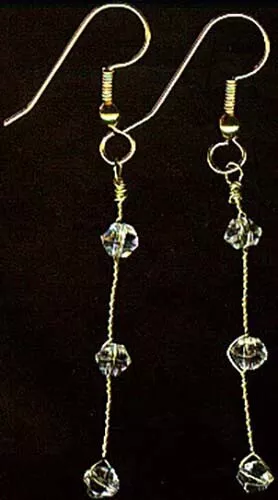
Antique Quartz Crystal 14ktGF Ancient Greece Eleusinian Cult Demeter Persephone
$35.49 Buy It Now 17d 3h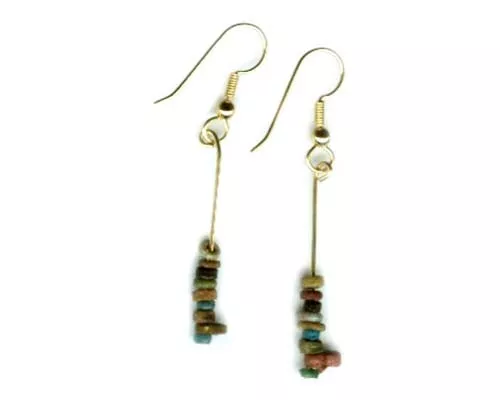
BC1100 Colorful Ancient Egypt Faience Silica Ceramic Proto Glass Earrings 14ktGF
$69.99 Buy It Now 10d 3h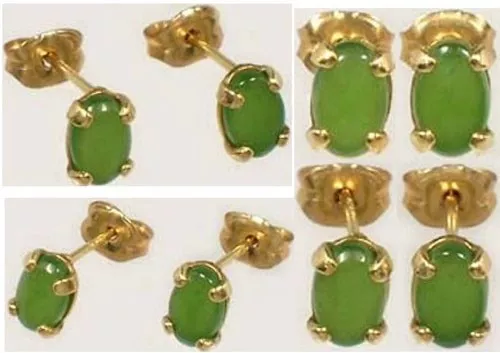
19thC Antique ¾ct Jade Neolithic Stone Age Europe Weapon Tool Swiss Alps 14ktGF
$79.99 Buy It Now 18d 8h
18thC Antique 3ct Handcut Norwegian Rhodolite Bohemian Gypsy "Cape Ruby" 14ktGF
$89.99 Buy It Now 18d 2h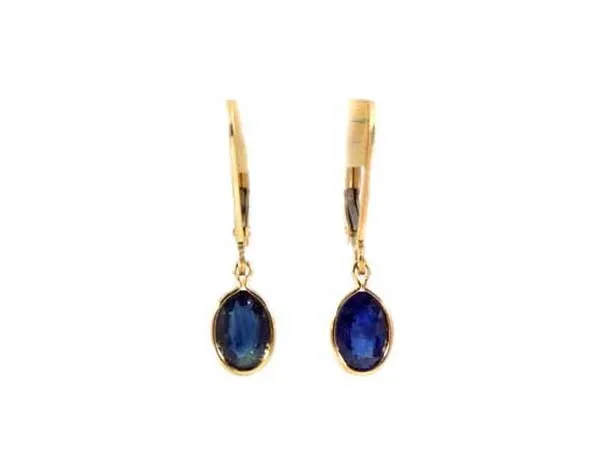
19thC Antique 1½ct Blue Sapphire 14ktGF Dangle Earrings: Ancient Roman Sorcery
$329.99 Buy It Now 23h 24m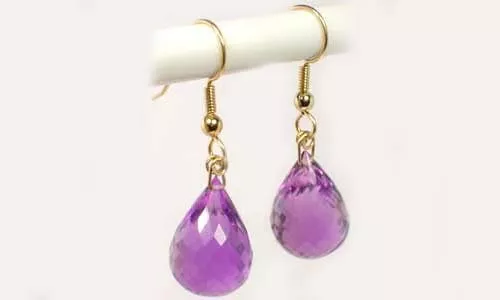
Antique 28½ct Scotland Amethyst Neolithic Pre-Dynastic Ancient Egypt Gem 14ktGF
$269.99 Buy It Now 9d 8h
19thC Antique 3½ct Blue Topaz 14ktGF Earrings Medieval Saxon Kings Travel Amulet
$159.99 Buy It Now 15d 1h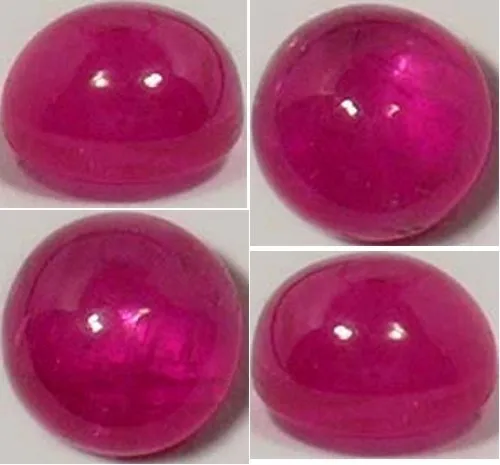
18thC Antique 2/3ct Ruby Ancient Celt Druid Magic Amulet Lightening Plagues Evil
$139.99 Buy It Now 11d 6h
19thC Antique 36ct Blue Topaz Earrings-Siberia Medieval Witchcraft Spells 14ktGF
$269.99 Buy It Now 25d 6h
19thC Antique 1½ct+ Green Sapphire + 14ktGF Earrings Medieval Pope Gem of Heaven
$359.99 Buy It Now 23d 1h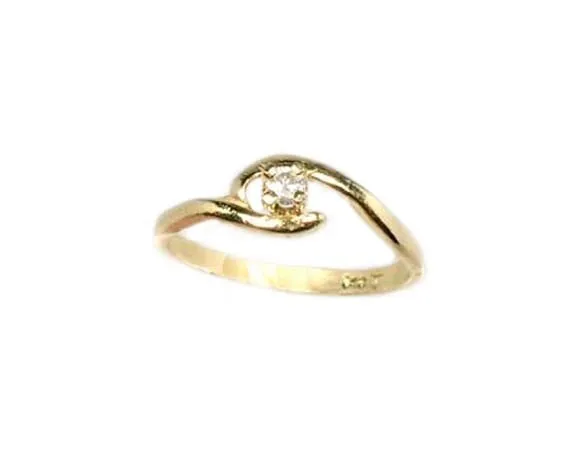
19thC Antique 3mm Diamond+14kt Gold Ring Ancient Roman Star Splinters Gods Tears
$999.99 Buy It Now 9d 4h
19thC Antique Diamond Ancient Greek Tears of Gods Roman Star Splinters 14kt Gold
$149.99 Buy It Now 16d 2h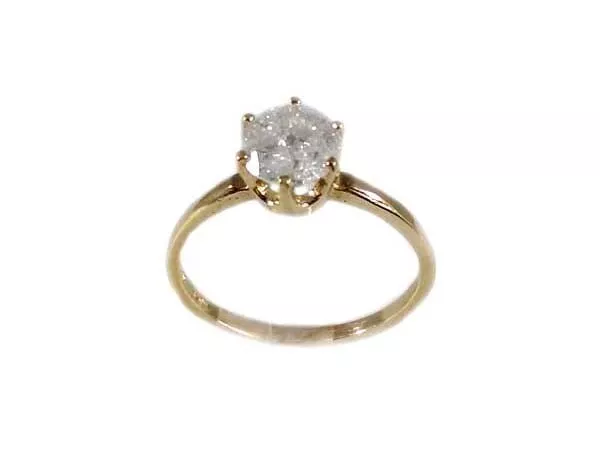
19thC Antique 1¼ct Diamond + 14kt Gold Ring: Ancient Greek Roman God's Tears Gem
$2,699.99 Buy It Now 10d 5h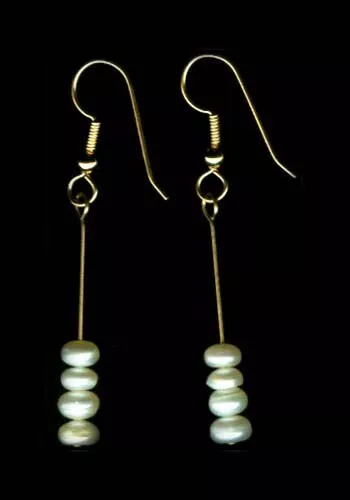
 Vintage Salt Water Pearl + 14ktGF Earrings Ancient Greece Ocean Lightening Tears$110.07 Buy It Now
Vintage Salt Water Pearl + 14ktGF Earrings Ancient Greece Ocean Lightening Tears$110.07 Buy It Now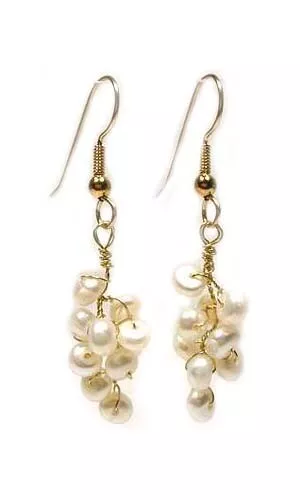
 Vintage 9ct Antique Salt Water Pearl 14ktGF + Earrings: Ancient Hindu Dewdrops$113.53 Buy It Now
Vintage 9ct Antique Salt Water Pearl 14ktGF + Earrings: Ancient Hindu Dewdrops$113.53 Buy It Now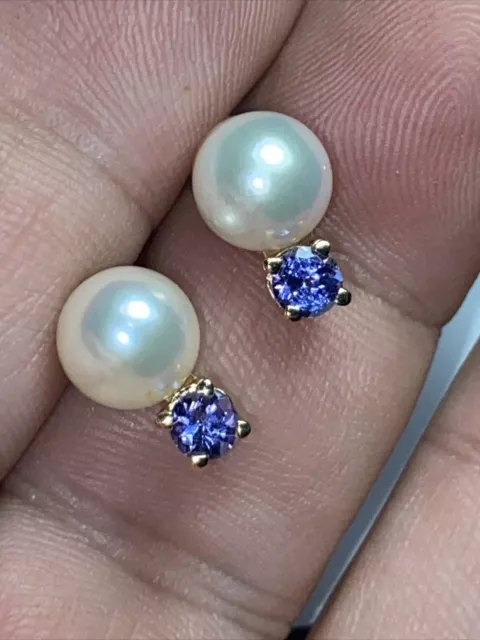 1 watcher
1 watcher 14k Pierced Earrings 8mm Akoya Pearl 1/2ctw Tanzanite Japanese Salt Water Unused$491.09 Buy It Now
14k Pierced Earrings 8mm Akoya Pearl 1/2ctw Tanzanite Japanese Salt Water Unused$491.09 Buy It Now 3 watchers
3 watchers AAA+ 100% round natural white AKOYA sea salt water pearl Earrings 14K j11574$47.86 Buy It Now
AAA+ 100% round natural white AKOYA sea salt water pearl Earrings 14K j11574$47.86 Buy It Now 2 watchers
2 watchersSterling Sliver 925 Earrings Dangle Salt Water Pearl
$18.47 Buy It Now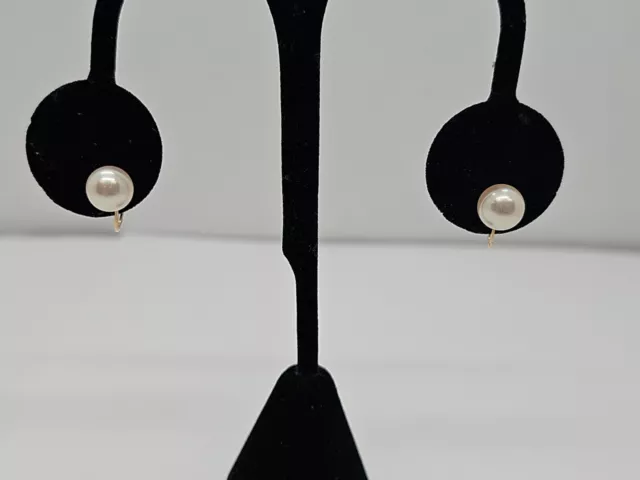
Vintage 14k Yellow Gold Cultured Salt Water Pearl Screw Back Earrings Non Pierce
$246.22 Buy It Now or Best Offer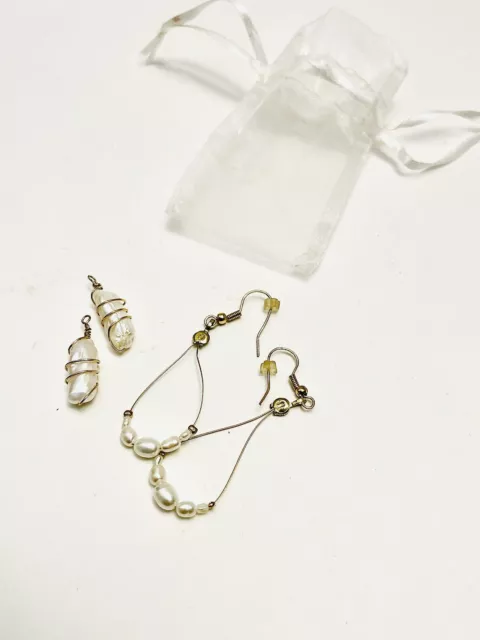 1 watcher
1 watcher Big Baroque White Salt Water Pearl Dangle Hoop Pendant Earrings Wrapped 18KYG
Big Baroque White Salt Water Pearl Dangle Hoop Pendant Earrings Wrapped 18KYG$24.62$17.24 Buy It Now or Best Offer 1 watcher
1 watcher Natural Salt Water South Sea Baroque 925 Silver Hook Earrings 4g$27.36 Buy It Now or Best Offer
Natural Salt Water South Sea Baroque 925 Silver Hook Earrings 4g$27.36 Buy It Now or Best Offer
 Pierced earrings Akoya Japanese salt water pearls 10k Yellow Gold Unused 8mm$203.82 Buy It Now or Best Offer
Pierced earrings Akoya Japanese salt water pearls 10k Yellow Gold Unused 8mm$203.82 Buy It Now or Best Offer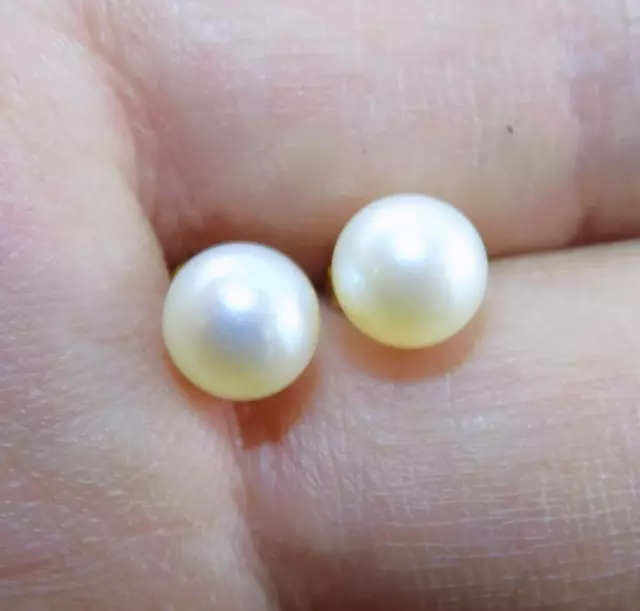 1 watcher
1 watcherElegant !!! 14K Solid Yellow Gold 7.5 mm Japanese Salt-Water Pearl Stud Earrings
$123.10 Buy It Now or Best Offer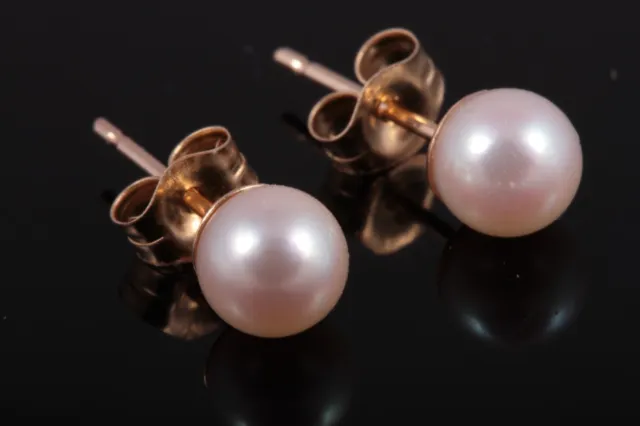 6 watchers
6 watchers 14 K Gold Sea Salt Water Cultured Pearl Stud Earring 5 mm$68.40 Buy It Now
14 K Gold Sea Salt Water Cultured Pearl Stud Earring 5 mm$68.40 Buy It Now
 Vintage 9ct Antique Salt Water Pearl 14ktGF + Earrings: Ancient Hindu Dewdrops$153.37 Buy It Now
Vintage 9ct Antique Salt Water Pearl 14ktGF + Earrings: Ancient Hindu Dewdrops$153.37 Buy It Now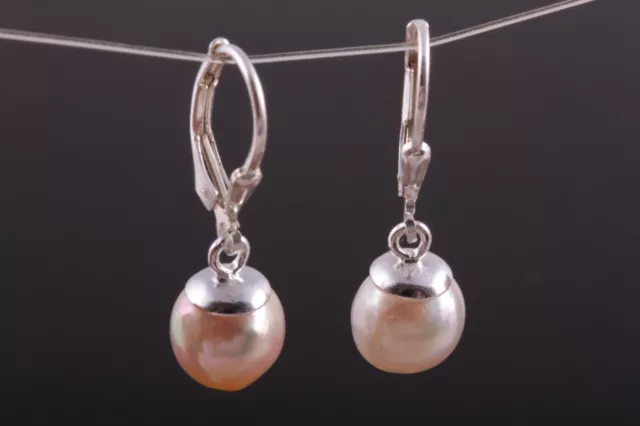 1 watcher
1 watcher Ocean, Saltwater 9mm Cultured Pearl Drop Earring with All 925 Sterling Silver$24.62 Buy It Now
Ocean, Saltwater 9mm Cultured Pearl Drop Earring with All 925 Sterling Silver$24.62 Buy It Now
 AAA Dangle 4-8mm round twin white AKOYA sea salt water pearls Earrings 14K K18$67.93 Buy It Now
AAA Dangle 4-8mm round twin white AKOYA sea salt water pearls Earrings 14K K18$67.93 Buy It Now 1 watcher
1 watcher AAA natural Dangle round twin white AKOYA sea salt water pearls Earrings 14K$68.38 Buy It Now
AAA natural Dangle round twin white AKOYA sea salt water pearls Earrings 14K$68.38 Buy It Now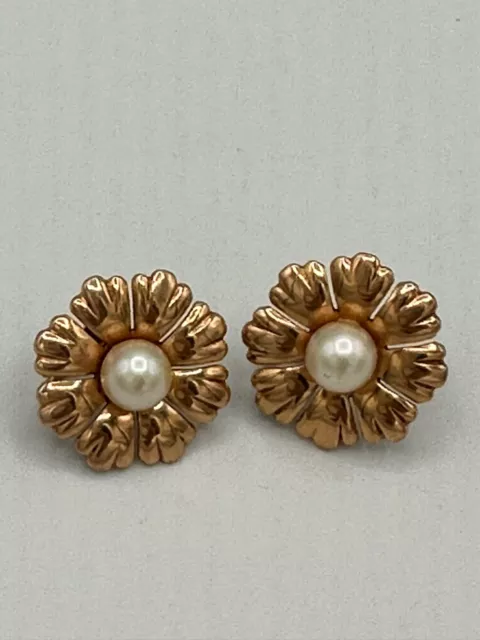 12 watchers
12 watchers00110 Antique 14K Gold and Salt Water Pearl Earrings.
$214.70 Buy It Now 7 watchers
7 watchers Saltwater Cultured Pearl Drop Earring 9 mm with 14K Gold Cap, 14K Gold Ear Wire$102.60 Buy It Now
Saltwater Cultured Pearl Drop Earring 9 mm with 14K Gold Cap, 14K Gold Ear Wire$102.60 Buy It Now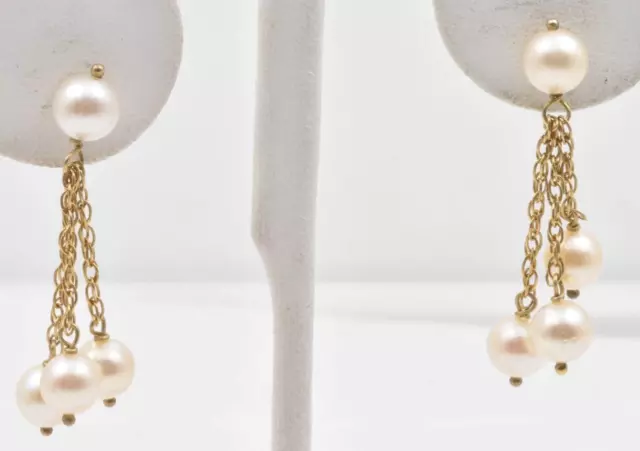
 Vintage 14k Yellow Gold Salt Water 5.6mm Pearl 3 Strand Dangle ladies earrings.$217.50 Buy It Now or Best Offer
Vintage 14k Yellow Gold Salt Water 5.6mm Pearl 3 Strand Dangle ladies earrings.$217.50 Buy It Now or Best Offer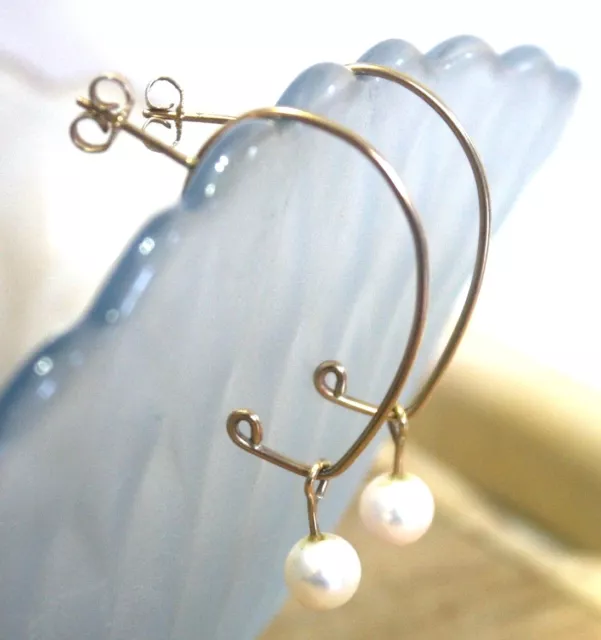 2 watchers
2 watchersNatural 7mm Salt Water Cultured Pearl Earrings Solid 14K Gold 30th Anniversary
$411.09$287.76 Buy It Now or Best Offer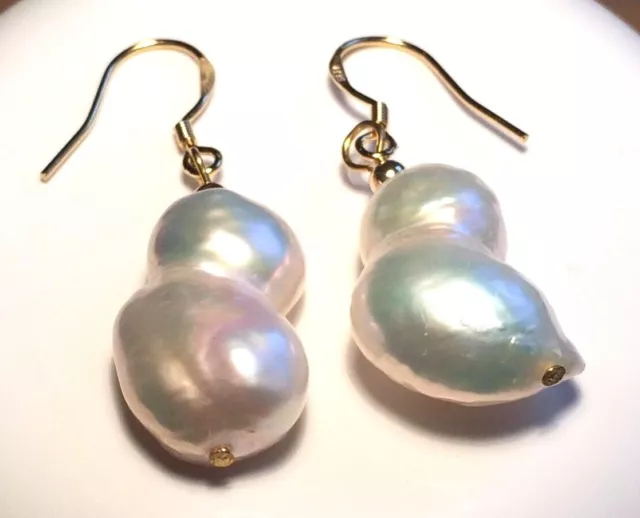 9 watchers
9 watchersPearl Earrings Large South Sea Natural White Baroque Excellent Lustre 18-12mm
$42.50 Buy It Now 3 watchers
3 watchers Vintage Japanese Salt Water Baroque Pearls 14K Gold Chandelier Clip Earrings$854.97 Buy It Now
Vintage Japanese Salt Water Baroque Pearls 14K Gold Chandelier Clip Earrings$854.97 Buy It Now 2 watchers
2 watchers Sea Salt Water (11 mm) Pearls Drop With Rose & Old Cut Cubic Zirconia Earrings$287.27 Buy It Now or Best Offer
Sea Salt Water (11 mm) Pearls Drop With Rose & Old Cut Cubic Zirconia Earrings$287.27 Buy It Now or Best Offer 3 watchers
3 watchers Sea Salt Water 7+mm Cultured Pearl Drop Earring with 100% 14K Solid Gold$129.96 Buy It Now
Sea Salt Water 7+mm Cultured Pearl Drop Earring with 100% 14K Solid Gold$129.96 Buy It Now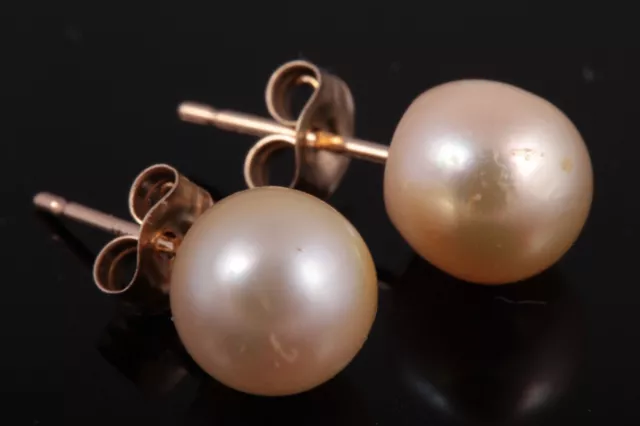
 Sea, Salt Water Cultured Pearl 7 mm Stud Earring with 14 K Gold Findings$75.24 Buy It Now
Sea, Salt Water Cultured Pearl 7 mm Stud Earring with 14 K Gold Findings$75.24 Buy It Now

